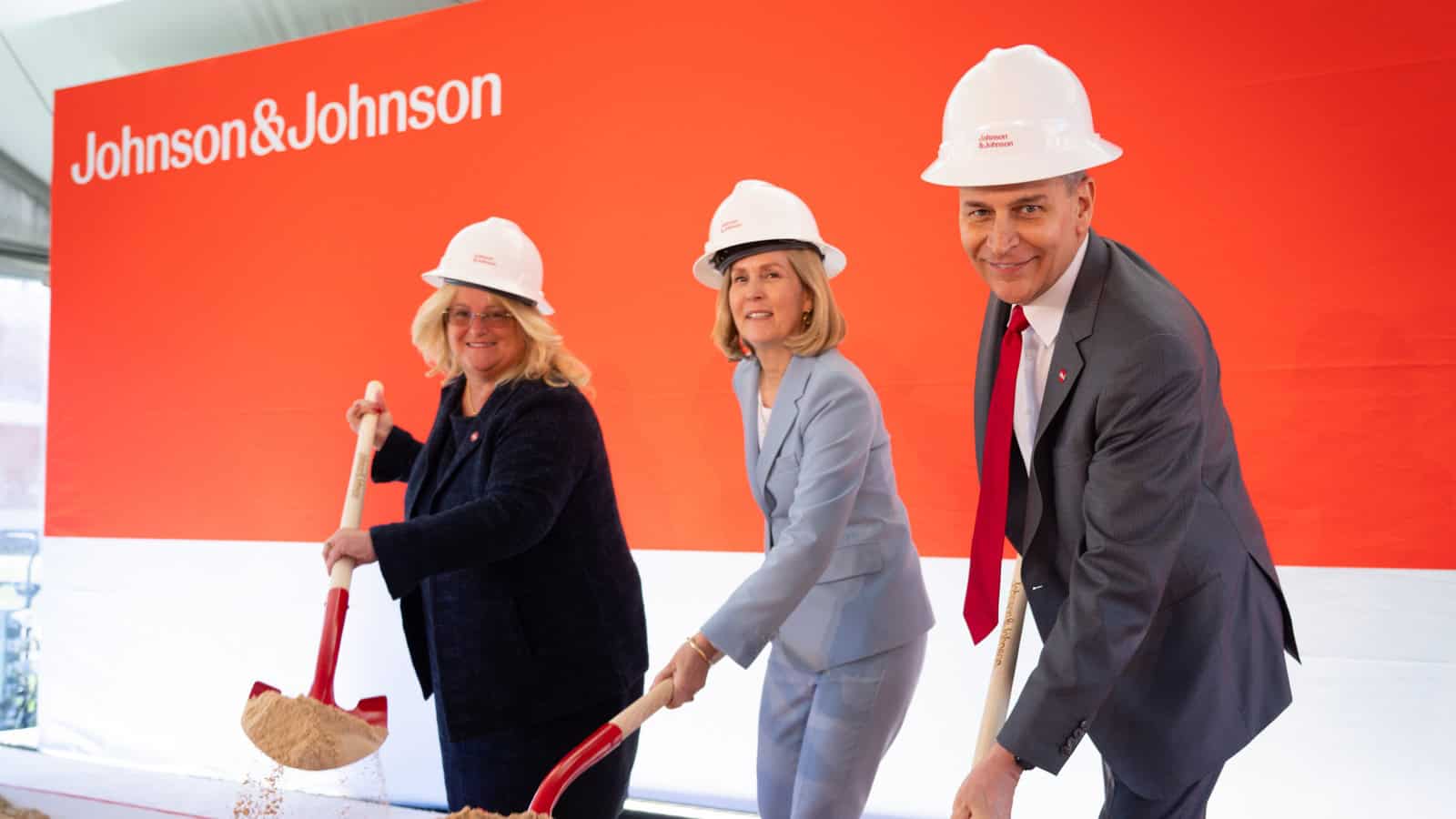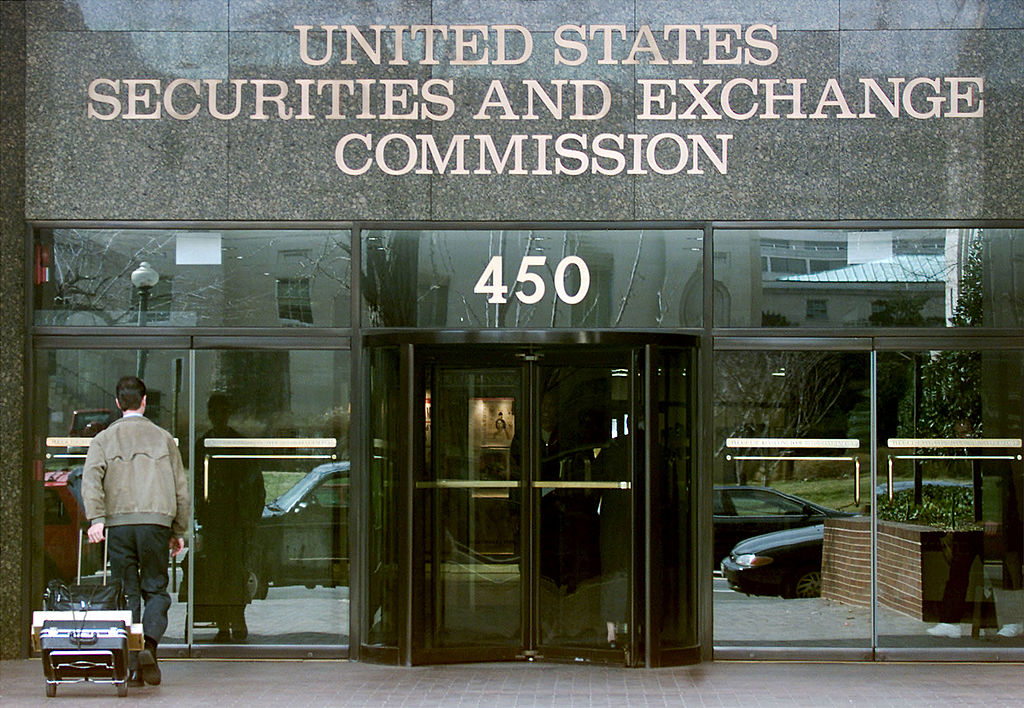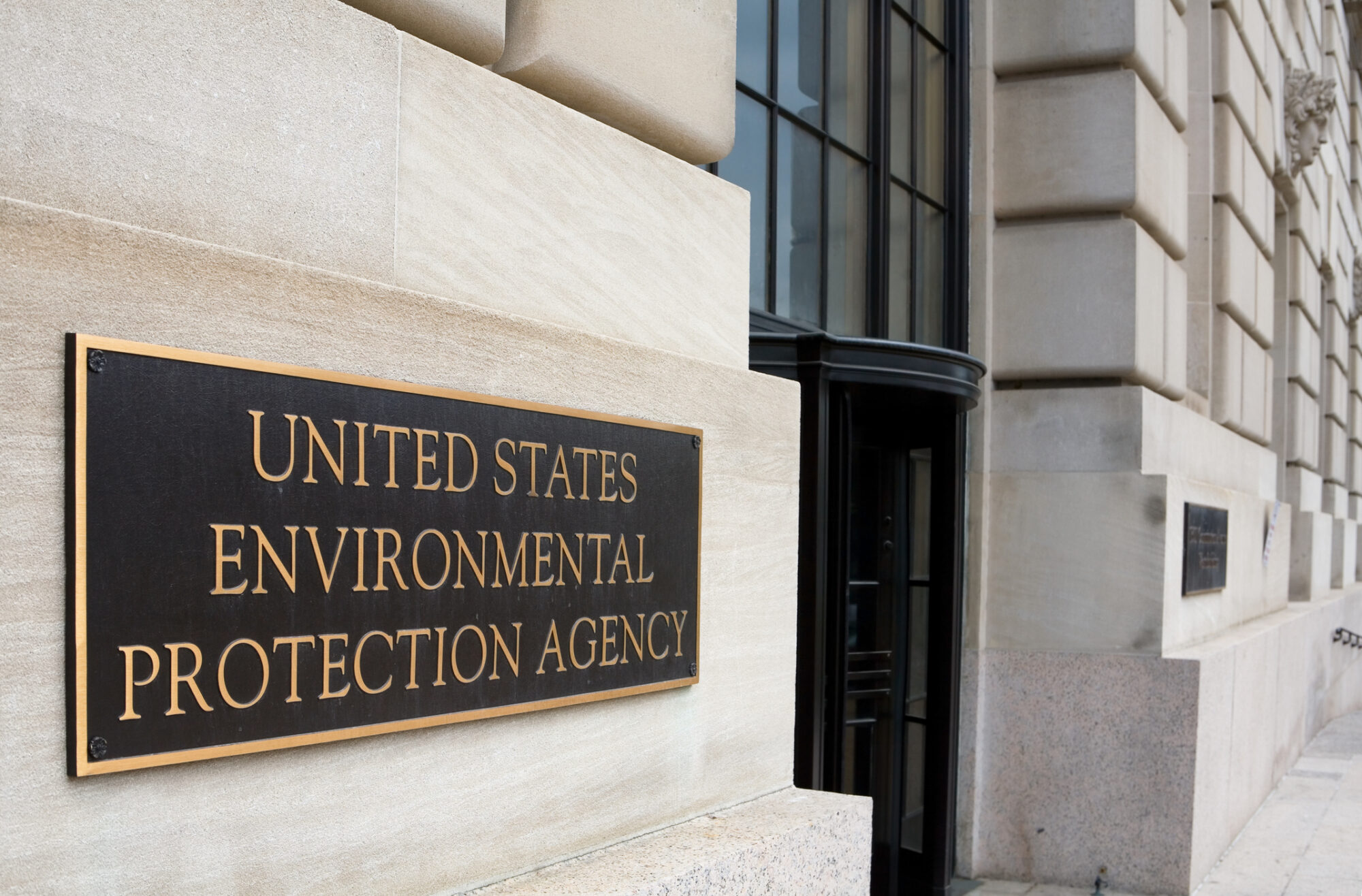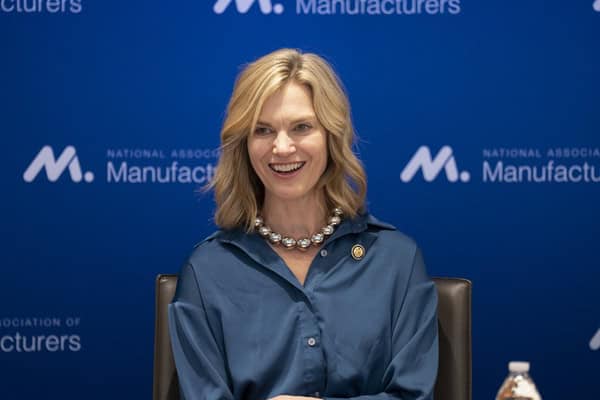Manufacturers on the Hill Urge Action on Tax Reform Permanency

Shop floor manufacturers and NAM staff met with members of Congress yesterday and continue these meetings today on Capitol Hill to hammer home the importance of making the 2017 tax reforms permanent and getting a comprehensive reconciliation bill done now. House and Senate Republicans are working on a strategy for a tax package as part of a reconciliation bill that includes extending the 2017 Tax Cuts and Jobs Act.
- In its Morning Tax newsletter, POLITICO (subscription) reported on this week’s fly-in, naming the NAM “a powerhouse business lobby” meeting with several members of Congress as the 2025 tax bill continues to “get more intense.”
Why this is a critical moment: When the 2017 tax cuts were signed into law, “it was rocket fuel for manufacturing in America and made the U.S. economy more competitive on a global scale,” said NAM President and CEO Jay Timmons earlier this month.
- “That fuel is about to run out as key provisions have expired, and others are about to lapse. … We must ensure these historic, pro-growth manufacturing provisions are made permanent and even more competitive so manufacturers can plan, grow and succeed.”
“Exactly what the country needed”: Manufacturers traveled hundreds of miles from their shop floors to urge Congress to keep the rocket fuel for manufacturers and the American economy.
- “The Tax Cuts and Jobs Act of 2017 was huge for us,” said Tom Onsrud, CEO of the 51-year-old industrial CNC machine maker C.R. Onsrud, Inc., in Troutman, North Carolina. “It was rocket fuel. As soon as it passed, our backlog exploded. We started employing more people. We went from about 100 people to 220 people. Our floor space was maxed out. … It was exactly what the country needed.”
- One of the provisions, the immediate research and development tax credit, allowed the family-owned business to “expense equipment [costs] quickly,” Onsrud added. “That was huge for us.” That provision, however, expired in 2022.
“Vital to our company”: Stephen Bullock, president of concrete paving equipment manufacturer Power Curbers in Salisbury, North Carolina, is in Washington this week to make sure Congress knows just how important the tax reform measures have been to his small company.
- “We rely on them,” Bullock said. “We spend a lot of time and resources and money in research and development. Without [the tax provisions], it would be impossible for our company to support manufacturing. We’ve got to stay ahead of the game with new machinery, new offerings for our customers. So … anything we can do to realize those tax advantages sooner rather than later helps us very much from a cash-flow standpoint.”
- The TCJA “allowed us to expand and hire additional staff so that we [could] fund new programs, new machinery.”
“Tripled our business”: Steve Macias, co-owner of machining company Pivot Manufacturing, traveled from even farther away—Phoenix, Arizona—to make sure Congress heard what he had to say.
- “The tax reforms of 2017 … allowed us to grow our company in a way that we hadn’t [been able to] previously,” Macias told the NAM. “We were a small machine shop that did prototype and R&D work, and we’d been in business for 17 years. The tax cuts kind of gave us the kick … to take a leap and buy some production equipment, which has allowed us to virtually triple our business over the last eight years.”
- “Legislators need to understand the impact of tax reform,” Macias went on. “I’m a machine shop in Phoenix, Arizona, and there are hundreds of machine shops across the U.S., but there are also thousands upon tens of thousands of small manufacturing companies that made the same decisions we did based on those tax policies.”
Schneider Electric to Invest More Than $700 Million in U.S.

Global energy management and digital transformation giant Schneider Electric will invest more than $700 million in U.S. operations over the next two years, the company announced yesterday (The Dallas Morning News, subscription).
What’s going on: “Schneider said it intends to leverage the investment to ‘support the country’s focus on bolstering the nation’s energy infrastructure to power AI growth, boost domestic manufacturing and strengthen energy security.’”
- The investment—the largest planned single capital expenditure in Schneider Electric’s 135-plus-year history—will be used to expand manufacturing facilities across the U.S. and to boost “smart factory transformation” across Texas, Massachusetts, Missouri and Tennessee, among other states.
- The company is the latest in a string of large manufacturers to announce sizeable domestic investments. Last week, biopharmaceutical firm Johnson & Johnson said it would spend more than $55 billion in the U.S. over the next four years.
- The announcement comes less than a year after the opening of Schneider Electric’s 105,000-square-foot facility in Red Oak, Texas, to support the data center boom in the Dallas–Fort Worth area.
Where else funds will go: The money will also be used to expand a campus in El Paso, Texas, “to keep up with growing demand to increase production of switchgear and power distribution products,” and to open a Houston innovation center that will offer AI-powered automation solutions.
Our take: “Schneider Electric’s significant investment is a clear sign that manufacturing in America is moving forward—driving economic growth, innovation and job creation across the country,” NAM President and CEO Jay Timmons said in a statement quoted in the article.
- “By expanding their operations with a focus on energy security, automation and AI, Schneider Electric is not only strengthening America’s competitiveness but also creating new opportunities and powering our nation’s future.”
NAM Forge Your Path Series: Meet CARR Machine & Tool President Jim Carr

Business is booming at CARR Machine & Tool, Inc., a manufacturer of precision machined parts for the aerospace, defense, semiconductor and medical industries.
The Elk Grove Village, Illinois–based company has seen record sales so far this year, and over the past five years, sales have skyrocketed 500%.
Spearheading this growth is Jim Carr, the company’s president and second-generation business owner and host of “my TRUE POSITION” podcast, who has transformed his shop floor by embracing technology, prioritizing culture and thinking outside the box.
In the latest installment of the NAM’s “Forge Your Path” series, Carr talks about how he got started in podcasting, his biggest accomplishments, where he sees his company in the next 10 years and more.
Q: How did you get started in podcasting, and what is the focus of “my TRUE POSITION”?
Carr: “Seeing a growing need for resources for thought leadership in manufacturing, I co-founded the ‘MakingChips’ podcast, which officially launched in January 2015. The podcast provides metalworking leaders content to enhance their careers and businesses, focusing on leadership, operations, technology and culture.
“In early 2022, I left ‘MakingChips’ to launch ‘my TRUE POSITION,’ a 20-minute, introspective show that provides manufacturing professionals immediate and actionable insight into high-level issues of running a small to medium-sized business.”
Q: What is one lesson or insight you’ve gained in leadership that you haven’t widely shared before but that has been a key part of your company’s success?
Carr: “I was raised in a manufacturing environment with a very poor company culture, so I knew when I took over CARR Machine & Tool in 2004, it was my job to really change the way that I believe a company should be run and to respect your employees. I thought that was very important. It’s been very powerful in the success of the company over the past 20 years.
“The thing that I don’t talk much about is the importance of bringing your personal brand into your corporate brand and having them aligned. Everyone has their true authentic self, but sometimes people are afraid to let others see that. When you can allow that into your corporate brand, it becomes powerful and authentic—and people are attracted to that authenticity.”
Q: Can you share a quote or mantra that defines your approach to leadership? How has this mantra influenced your decision-making and leadership?
Carr: “One that I have learned from my father, Richard, who I worked with for decades, is to keep pushing yourself. That doesn’t mean to work 150 hours a week, but to push yourself outside of your comfort zone. Sometimes we get complacent and can be afraid to venture outside of that comfort zone. It only takes a little bit of discomfort to make you grow. If you do that, you’ll have big wins over the long term.”
Q: What accomplishments at your company are you the most proud of and why?
Carr: “Having my son join the company 10 years ago provided a big paradigm shift in how we operate. Bringing him in and reading the book ‘Traction,’ which talks about how to use the Entrepreneurial Operating System as a systematized way to run your business and achieve success, were very impactful in our growth. Getting AS9100 accreditation—meaning that as a true aerospace manufacturing company, we are consistently demonstrating quality and safety in providing products that meet our customers’ needs—has also been important. Prioritizing company culture has been another big thing that has really changed the face of the company.
“One of the best things we did was move to a new 15,000-square-foot state-of-the-art facility about two blocks from where our other facility was located. We purchased brand-new five-axis precision machining. We’ve done a great job of implementing robotic automation. We have a quality control department now inspecting parts and documenting tolerances. We implemented a new ERP system, and it’s helped us scale. We’ve gone from a regular ‘mom and pop’ machine shop to a world-class AS9100 company with detailed documentations and mandates.”
Q: Where do you see your company in the next 10 years, and what are you hoping to achieve?
Carr: “We’re working on a 10-year succession plan right now as I hope to be fully retired by then. I’ll probably still be podcasting—if podcasting is still a thing in 10 years. I envision an even more state-of-the-art company where we’re using artificial intelligence technology. Also, achieving cybersecurity maturity model certification for dealing with government and classified information will be important.”
Q: What is one piece of advice you would give to a manufacturing leader?
Carr: “I think it’s important to network and have that human experience because there’s nothing like meeting people in person and learning about his or her experiences. Also, if you have the opportunity to join a board, do it as it’s a great way to network with like-minded individuals who know the industry and can help you navigate issues you may be experiencing.”
Manufacturing Wins: J&J Invests More Than $55 Billion

Johnson & Johnson will spend more than $55 billion on manufacturing, research and technology in the U.S. over the next four years, the biopharmaceutical company announced (Axios). These investments include a long-planned $2 billion state-of-the-art biologics facility in Wilson, North Carolina.
What’s going on: The NAM joined J&J for the groundbreaking of the 500,000-square-foot biologics manufacturing plant in Wilson on Friday.
- The White House praised the announcement and J&J’s commitment to manufacturing in America. North Carolina Gov. Josh Stein and Rep. Don Davis (D-NC) also attended the ceremony to highlight the facility’s importance to the state economy and the jobs it will bring to the state.
Other projects across the total investment will include:
- Three new advanced manufacturing sites and the expansion of several facilities in J&J’s Innovative Medicine and MedTech businesses;
- Significant spending on research-and-development infrastructure “aimed at developing lifesaving and life-changing treatments in areas such as oncology, neuroscience, immunology, cardiovascular disease and robotic surgery,” according to the company; and
- More investment aimed at speeding drug discovery and development, supporting workforce training and improving business operations.
Common goal: The Wilson site demonstrates the power of collaboration, Johnson & Johnson Executive Vice President and Chief Technical Operations & Risk Officer and NAM Board Chair Kathy Wengel said at the groundbreaking.
- “Today is a tangible example of how J&J is bringing communities, government, education and industry together to achieve the common goal of creating a future-ready workforce that is ready to tackle the toughest health challenges and achieve new breakthroughs.”
Why it’s important: The investments will strengthen not only North Carolina’s economy, but the U.S. economy as a whole, NAM President and CEO Jay Timmons said at the event.
- “Every $1 invested in manufacturing adds more than $2.60 to the economy. That’s top-of-the-line ROI for communities, neighborhoods and cities like Wilson—among the best ROIs you can get. And every new manufacturing job supports, on average, five additional jobs in other industries.”
The big picture: The new Wilson facility will generate a $3 billion impact across North Carolina in its first decade of operation.
- It will support about 5,000 jobs during construction and create more than 500 permanent positions—paying an average of $109,000 a year—in the state (WRAL News).
Certainty and predictability: These investments illustrate why policymakers must ensure that manufacturers have more certainty and predictability, not less, Timmons added.
- “Manufacturing—especially biopharmaceutical manufacturing—requires years of planning, ingenuity and investment decisions,” he said. “When there’s stability, common sense and competitive policies, companies like Johnson & Johnson can plan for the future—and plan big.”
- Timmons said that to “make more wins like this happen,” elected officials must stay focused on a comprehensive manufacturing strategy, including a “competitive tax policy, balanced regulations, prompt permitting, abundant energy and smart trade policies.”
The tax factor: J&J credits the 2017 Tax Cuts and Jobs Act with allowing it to increase its investment, according to MassDevice.
- Investments like J&J’s “are why it is critical that pro-growth provisions of the 2017 tax law be made permanent and more competitive,” Timmons wrote in a social post. “If Congress fails to act, 6 million American jobs—184,000 in North Carolina—will be wiped out. We can’t let that happen.”
- But if Congress does preserve the measures, manufacturing will win, Timmons said. “And when manufacturing wins, America wins.”
Critical Minerals Executive Order Strengthens U.S. Manufacturing

President Trump’s recent executive order to accelerate permitting and access to domestic critical minerals will help manufacturing—and America—win, NAM President and CEO Jay Timmons said.
What’s going on: The recent executive order aims to boost U.S. production of critical minerals—which include lithium and cobalt—“as well as uranium, copper, potash, gold and any other element, compound or material as determined by the Chair of the National Energy Dominance Council,” according to the EO.
- China dominates the global market for critical minerals, which are vital in the manufacture of everyday goods from cell phones and computers to advanced energy and defense technologies.
- Increasing American production of these crucial substances “can create jobs, fuel prosperity and significantly reduce our reliance on foreign nations,” according to the EO. “Transportation, infrastructure, defense capabilities and the next generation of technology rely upon a secure, predictable and affordable supply of minerals.”
What’s in it: The EO—which cites “overbearing federal regulation” for the lack of American critical mineral production—enumerates “staggered timelines for agencies across government to prioritize financing for domestic mineral projects, including loans, capital and technical assistance, and calls on the Department of Defense to accelerate domestic mineral production” (POLITICO Pro’s GREENWIRE).
- It also calls on the DOD to work with the U.S. International Development Finance Corporation to offer financing for the projects.
Aligned on regulations: The NAM has long called for regulatory reform to combat the onslaught of rules coming from the federal government—and this EO is a much-needed reform, said Timmons.
- “For too long, red tape and burdensome regulations have stood in the way of the basic building blocks that power manufacturing in the United States, especially mining and processing the minerals manufacturers rely on to create jobs and dominate on the world stage,” Timmons said. “The administration is addressing those barriers, making it easier for manufacturers to access the resources we need to build the future in America.”
Light-Touch AI Regulation Serves Manufacturers, Consumers Best

Artificial intelligence has become integral to modern manufacturing, which is why manufacturers support the Trump administration’s goal of making America globally dominant in AI, the NAM told the White House this month.
What’s going on: “[M]anufacturers use AI in myriad ways, which has made AI integral to modern manufacturing and put manufacturers at the forefront of developing and implementing AI systems,” the NAM told White House Office of Science and Technology Policy Acting Director Michael Kratsios and AI and Crypto Czar David Sacks last Friday in response to a request for information on the development of an AI action plan.
- The NAM supports President Trump’s stated goal of “sustain[ing] and enhance[ing] America’s global AI dominance in order to promote human flourishing, economic competitiveness and national security” while also, in Vice President Vance’s words, “avoid[ing] an overly precautionary regulatory regime.”
- The NAM has been one of the foremost voices for smart regulations on AI. Last May, it published “Working Smarter: How Manufacturers Are Using Artificial Intelligence,” a first-of-its-kind AI report on AI deployment in manufacturing and an accompanying list of suggested AI-policy actions Congress and the administration should take.
What should be done: To ensure that Americans benefit from AI safely and in a manner that does not unduly hamstring innovation, four specific steps should be taken, the NAM said:
- Direct regulators to update their frameworks for the AI age: “[M]anufacturers recommend that the AI Action Plan direct federal regulators to review the statutory and regulatory frameworks they maintain and enforce”;
- Customize AI regulations: “AI is context-specific, so ‘AI regulation’ should be too”;
- Transparency between AI vendors and users: The plan should direct [the National Institute of Standards and Technology] to work with the industry to develop best practices on how vendors explain how they develop and train their AI systems, to help companies defend their use of these AI systems in front of regulators.
- “Right-size” compliance burdens: “The ubiquitous use of AI throughout modern manufacturing, as well as manufacturing’s dependence on innovation, underscore the need for rules that enable rather than hinder manufacturers’ development and adoption of AI systems.”
Other critical needs: In addition, the NAM urges the administration to prioritize the following as part of its AI action plan:
- A “dual workforce strategy”: “The AI Action plan should make enhanced access to, and support for the development of, science, technology, engineering and mathematics (STEM) education programs throughout the country, at both the K-12 and higher education levels, a national priority … and increas[e] the allowable number of advanced degree STEM graduates for employment-based visa categories, in particular among lawful permanent residents.”
- Permitting reform and existing energy generation: The plan should endorse expedited judicial review and permitting processes for energy generation projects, working “with stakeholders to identify ways that the projected increase in demand growth can be leveraged to lower the cost curve of traditional light-water [nuclear] reactors” and look closely at the role of natural gas as a source of baseload power for the data center sector.
- Privacy and security: Work “with Congress to pass a national privacy law that fully preempts the growing patchwork of state laws, protects individuals’ privacy and provides much needed legal clarity to support continued innovation and competitiveness.”
Vance: Manufacturing Will See Renaissance Under Trump

Manufacturing in the U.S. will experience a renaissance under President Trump, Vice President JD Vance said Friday in an NAM-attended speech at Vantage Plastics in Bay City, Michigan.
What’s going on: Vice President Vance—whose talk was part of the Small Business Administration’s recently announced multistate Made in America Manufacturing Initiative and Made in America Roadshow—told the crowd of employees at the plastics processing facility that America’s achievements are contingent on the achievements of its manufacturers.
- “I really do believe that America’s success depends on the success of companies like Vantage Plastics,” he said. “And I don’t mean that in some abstract, poetic-sounding sense; I mean it literally. If we do not protect our nation’s manufacturers, we lose a fundamental part of who we are as a people. Making things, building things, working with our hands is America’s heritage, and that heritage is alive and well in this facility.”
- Vantage Plastics President Paul Aultman agreed. “Imagine how much stronger this country would be if every manufacturer—large and small, in cities and towns across America—had the tools to build, expand and succeed,” Aultman said. “Manufacturing is the backbone of America, and on shop floors like ours, we’re not just making products—we’re making the future.”
Relief from the onslaught: The Trump administration intends to protect manufacturers and in doing so, touch off a gilded age for the industry—by unburdening it of the many regulations that have been heaped upon it, said Vice President Vance.
- “The Trump administration is working hard to slash regulations left and right. … We’ve got to make it easier to build stuff in our own country. We can’t have people telling our great builders that if they want to start a factory or if they want to expand a factory, they’re not allowed to,” he said, echoing longtime NAM advocacy, backed by manufacturer surveys and data. “And that is the biggest thing, I think, the Trump administration is working on when it comes to renewing American manufacturing.”
- SBA Administrator Kelly Loeffler, who spoke prior to Vice President Vance at the event, sounded a similar note, saying, “The golden era of manufacturing in America is not behind us; it’s in front of us” (Detroit Free Press).
Energy unleashed: Vice President Vance discussed the administration’s NAM-supported move last week to review dozens of burdensome Environmental Protection Agency regulations.
- “These include the Greenhouse Gas Reporting Program, which cost U.S. factories and power plants hundreds of millions of dollars,” the vice president continued. “And that money is now going to be reinvested in American workers. And we remember the Clean Power Plan 2.0, which has imperiled America’s grid by creating impossible restrictions on coal and natural gas plants that account for 60% of our power. You can’t tell people to build in America while at the same time destroying American energy.”
A new path forward: Under President Trump, American manufacturing will have room to thrive, the vice president went on.
- “We are done overregulating American businesses. We are going to be guided by a simple principle: Build in this country. We cut your taxes, we reduce your regulation and we reduce your energy costs. Build in this country. Make American manufacturing great again. And we are going to fight for you—and the president will, too.”
- “Our goal is to make it easier and more affordable to make things again in the United States of America,” he said. “If you invest in American jobs and workers and businesses, you will be rewarded. We will cut your taxes, we will slash regulations and reduce the cost of industry in this country we all love.”
The last word: “President Trump and Vice President Vance understand what manufacturing means to America—not just in economic terms, but also in human terms,” NAM President and CEO Jay Timmons said.
- “But we can only reach our full potential with the type of leadership that will make the 2017 tax reforms that were rocket fuel for the manufacturing industry permanent, rebalance the regulatory framework, expedite permitting reform to unleash American energy, grow the manufacturing workforce and implement sensible trade policies. That’s how we make America strong, prosperous and proud. That’s how we will Make America Great for Manufacturing Again.”
NAM Urges D.C. Circuit to Preserve SEC’s Ability to Regulate Proxy Firms

The Securities and Exchange Commission clearly has the authority to “adopt commonsense measures to protect investors” from “the most influential voices” in the proxy voting process: proxy advisory firms, the NAM’s Legal Center told the U.S. District Court of Appeals for the D.C. Circuit this week.
What’s going on: On Thursday, the NAM filed a reply brief in Institutional Shareholder Services Inc. v. Securities and Exchange Commission—a challenge, launched in 2019 by ISS, to the SEC’s statutory authority to enact critical proxy firm reforms.
- With its main competitor, Glass Lewis, ISS controls 97% of the proxy advice market and influences nearly 40% of the U.S. shareholder vote. Proxy firms are large, influential and unregulated entities that frequently dictate how shareholders should vote on proxy ballot proposals that come before public companies.
- The NAM’s brief explains that the SEC is “well within its statutory authority over the proxy process to regulate the entities that exert perhaps the greatest influence on that process” and asks the court to overturn a lower court’s ruling last February holding that the SEC lacks the authority.
- The brief is our latest move in a years-long effort to ensure reasonable oversight and regulation of proxy firms.
The background: In 2020, the SEC finalized an NAM-backed rule that put into place critical proxy firm reforms, including a requirement that the firms disclose any conflicts of interest.
- Though the NAM successfully fought across multiple pieces of litigation to preserve the 2020 rule, the SEC itself chose not to appeal the ISS case after a district court in 2024 sided with ISS in the proxy firm’s suit against the SEC.
- The NAM as intervenor-appellant has remained in the fight, making manufacturers the sole bulwark against proxy firms’ unchecked power.
- A victory for the NAM in the D.C. Circuit would make the proxy firms subject to the 2020 rule’s important reforms.
Why it’s crucial: Proxy firms “pose a real threat to Americans’ financial security,” NAM Managing Vice President of Policy Charles Crain told Congress in September.
- “Their errors and conflicts of interest put their own profits above Main Street investors’ retirement savings, their inflexible policies and refusal to engage with companies result in one-size-fits-all recommendations, their robo-voting swings investor votes in their favor and they advance ESG agendas that ignore, or even harm, shareholder value.”
EPA Reconsiders Dozens of Burdensome Regulations

The Environmental Protection Agency announced Wednesday it would begin a large-scale, NAM-supported review of dozens of rules and regulations, including the previous administration’s unworkable National Ambient Air Quality Standards for particulate matter and an overly burdensome power plant emissions rule (EPA).
What’s going on: In response to sustained advocacy from the NAM and manufacturers around the U.S., EPA Administrator Lee Zeldin said in a press release and Wall Street Journal (subscription) op-ed that he intends to take swift action to review and potentially rescind regulations that were hamstringing manufacturers and needlessly driving up costs across the board.
What’s in it: The NAM in December called on President Trump to reverse the regulatory onslaught of the past four years. NAM-recommended actions included in yesterday’s EPA announcement included reconsideration of the following:
- NAAQS for PM2.5: Last year, the Biden administration tightened the primary annual standard for particular matter—more commonly known as soot—to an untenable 9 micrograms per cubic meter from 12 micrograms per cubic meter. Manufacturers found to be in nonattainment of these standards will now be denied permits for new and expanded facilities.
- Power plant rules: The previous administration’s emissions regulations on existing coal-fired and new natural gas–powered power plants include an unrealistic timeline for the widespread adoption of expensive, unproven new technology; this regulation threatens grid reliability and the ability of manufacturers to receive power for their operations.
- Vehicle regulations: Current regulations of light-, medium- and heavy-duty vehicles impose costly hardships on auto manufacturers.
- Waters of the United States: The last administration had made the scope of the Clean Water Act overly broad, resulting in high costs and even slowed permitting processes.
Our view: “President Donald Trump and EPA Administrator Lee Zeldin have answered the calls of manufacturers across the country to rebalance and reconsider burdensome federal regulations harming America’s ability to compete,” NAM President and CEO Jay Timmons said in a statement picked up by The Washington Post (subscription).
New House AI, Energy Working Group Issues RFI

The newly established House of Representatives’ AI and Energy Working Group is seeking information on the increase in energy demand we can expect due to the growing use of artificial intelligence (POLITICO Pro, subscription).
What’s going on: Group lead Rep. Julie Fedorchak (R-ND)—who was North Dakota’s head utility regulator for more than a decade prior to being elected to Congress last year—discussed the new working group with us Tuesday at NAM headquarters.
- Rep. Fedorchak spoke at an event at the NAM on how the U.S. can strengthen the electrical grid, advance permitting reform and support manufacturers investing in the latest energy technologies.
- The working group issued a request for information on Monday, “invit[ing] stakeholders to provide written responses” to questions under “three pillars,” according to the RFI document.
The details: These pillars are the following:
- American Energy Dominance and AI Energy Demands: The RFI “seeks to identify strategies to secure a stable, affordable and sustainable domestic energy supply capable of powering next-generation AI infrastructure.” Subtopics on which respondents are asked to inform the working group include oil and gas, nuclear, solar, geothermal and other power production methods.
- Securing the Energy Grid: A resilient, secure electrical grid is “essential” for AI systems and the larger “digital economy,” the document says. Permitting reform, electricity generation and baseload power are possible subtopics here.
- Strategic Competition: Outpacing China: “In an era of intensifying global rivalry, ensuring American technological and energy leadership is critical.” Some of the subtopics under this pillar are manufacturing, critical minerals and chips.
Why it’s important: “To be AI dominant, we must first be energy dominant,” Rep. Fedorchak said in a statement, according to POLITICO Pro.
- “In 2024, data centers accounted for 4.3% of total U.S. power demand, and analysts predict this could climb to as much as 12% by 2030—more electricity than the entire state of Texas uses today. Yet the U.S. isn’t scaling up reliable baseload power quickly enough to support this rapid growth.”
How to respond: Responses are due by May 15 and should be emailed to [email protected].
